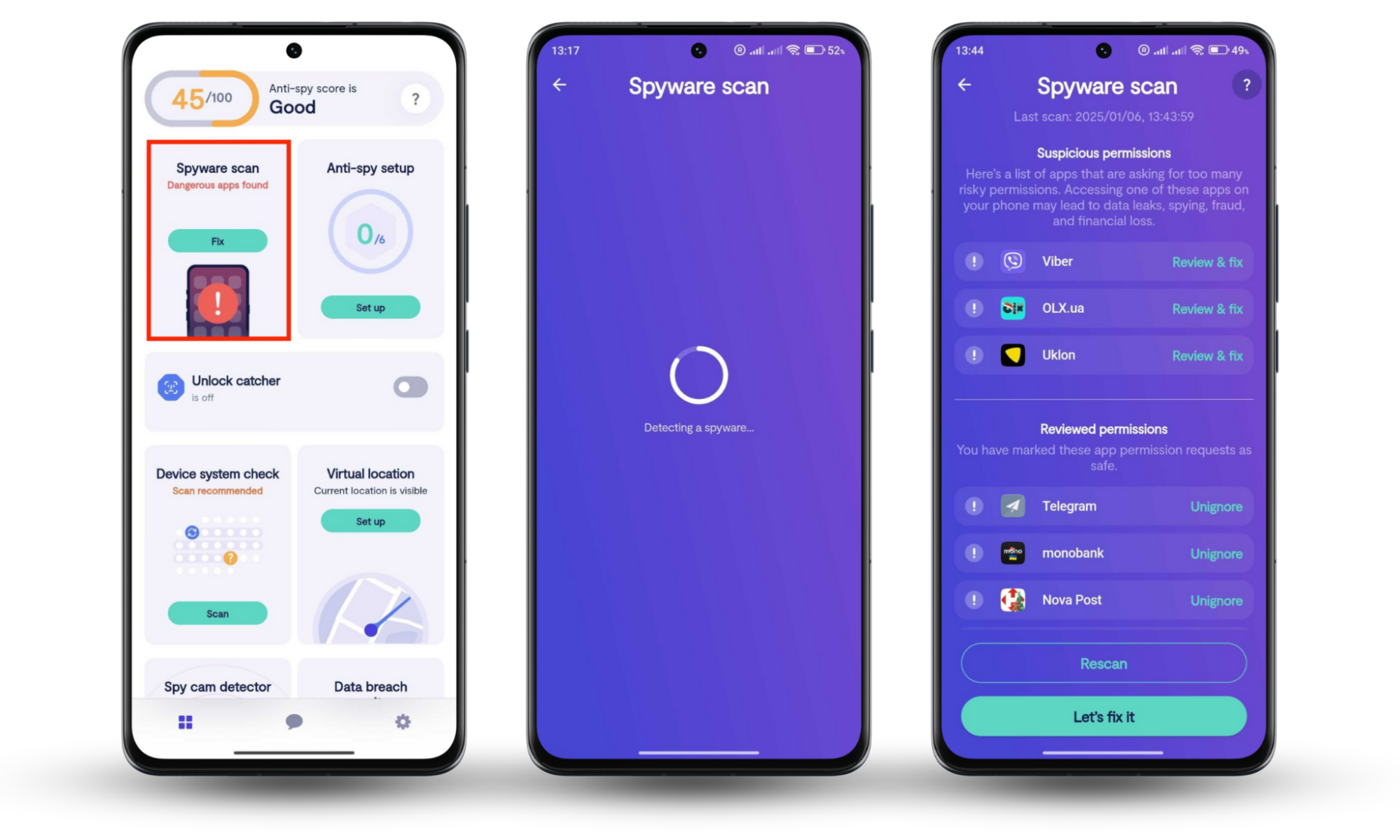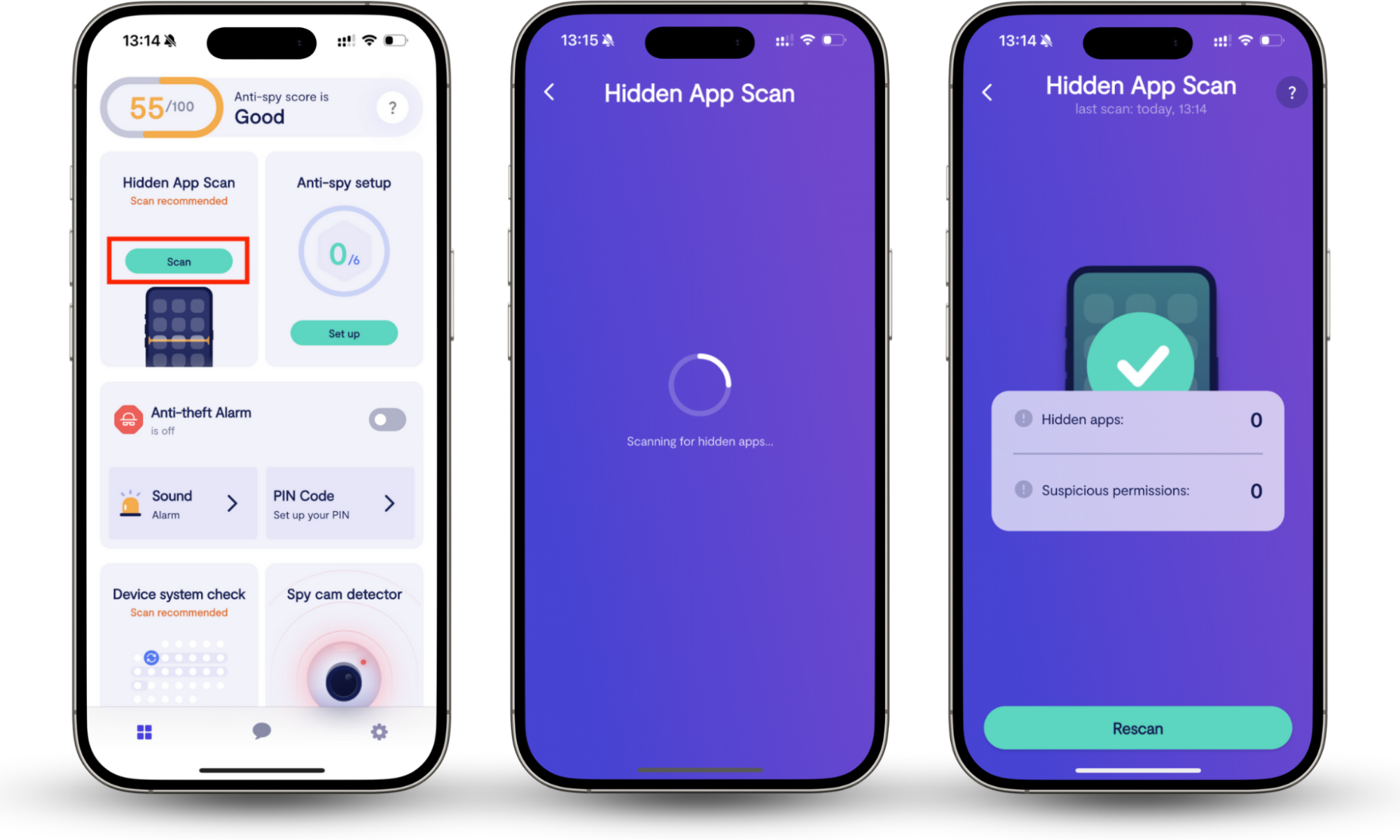Table of contents
- Why do companies use AI for employee monitoring?
- How is AI used to monitor employees?
- What data do AI tools track during employee monitoring
- Legal and ethical considerations of AI employee monitoring
- Employee reactions and resistance to AI monitoring
- Can employees refuse AI monitoring at work
- How employees can protect their personal data from AI monitoring
- Conclusion
Why do companies use AI for employee monitoring?
Organizations might use AI employee monitoring to track performance and compliance—for example, checking timesheets, looking for keywords in messages, or making sure team members are meeting their KPIs. Some employers might also use AI to notify employees about security risks, like unexpected login attempts or unusual file downloads.
AI monitoring can also identify issues before they become serious problems. For example, it could be trained to notice that an employee regularly leaves early or takes longer with certain tasks—possible signs of burnout. A caring manager could use this information to support the employee in recovering.
How is AI used to monitor employees?
AI tools collect data about employees and their performance in many ways. This might include logging keystrokes, noticing if your cursor is still for a long time, scanning the content of your emails or messages for certain words or phrases, recording phone calls or meetings, or checking your device’s location. Depending on the software, it could offer real-time monitoring, generate regular reports, or alert managers and HR teams to trends or potential problems.
The software these companies use, Aware, reads messages to find behavior such as bullying or noncompliance. It also uses anonymized message content to gauge how workers react to new policies.
Remember, how your employer tracks you will depend on your job. If you’re a delivery driver, your organization will probably look for very different metrics than if you were an accountant.
Whatever your job, your employer’s systems might have some similarities. In many cases, they’ll install monitoring software on your devices. If you have a company phone, the tracking apps had probably already been installed when you received it. Fortunately, Clario Anti Spy can check for suspicious software—whether it’s a company device or your own personal phone.
Recently, one of our users came to us asking for help because he was worried about spy apps on his phone. He suspected that his wife had installed software to track his conversations, because she always seemed to know his whereabouts—and what he was discussing with other people. A quick Spyware scan found several unfamiliar, suspicious apps, and, with the help of Clario Anti Spy’s support experts, he was able to remove them easily. If you’re worried about being tracked by anyone, check for suspicious software.
How to look for spyware on your Android phone:
- Download Clario Anti Spy and sign up for a subscription.
- Tap on the Spyware scan.
- When the scan is complete, look at the list of apps that have Suspicious permissions. Tap Review & Fix and follow the on-screen instructions.

If you have an iPhone, you’re lucky. iOS has a security feature called sandboxing, which means that apps can’t usually access content from other apps. However, your employer could still monitor you through hidden apps with access to your camera, microphone, or calls.
How to check for hidden apps on iOS:
- Download Clario Anti Spy and subscribe.
- Under Hidden App Scan, tap Scan.
- When the scan is complete, follow the on-screen instructions if you have any hidden apps.

What data do AI tools track during employee monitoring
If a business is using AI employee monitoring, they might be collecting some of the following information:
- The times you access your account
- Random screenshots of your computer throughout the workday
- The content of your messages
- What you and others say during meetings or phone calls, and your tone of voice
- The apps and websites you use
- Your location or places you’ve driven
This information will probably be linked to your name and may help your employer see how productive you are, and whether there are any issues they should address. For example, if you regularly log in late or send negative emails to coworkers, your manager may want to discuss your behavior.
Other data might be anonymized—at least until it’s needed. For example, Aware says their data remains anonymous until the software flags something it’s been asked to find.
Legal and ethical considerations of AI employee monitoring
While AI employee monitoring might sound good, there are some issues to consider. If you’re based in the US and your software scores employees on their productivity or performance, the Consumer Financial Protection Bureau (CFPB) warns that companies should follow the Fair Credit Reporting Act rules. This means that workers should be given clear information, asked for consent, and allowed to dispute their score.
Can someone spy on your phone without touching it? Yes. Depending on your organization’s IT setup, they may install software on your device without your knowledge.
Monitoring employees in the US is often legal. However, companies must follow any state laws about data storage. And the Privacy Act of 1974 gives individuals the right to see their own records—so you should be able to ask to see the information your organization collects about you.
Depending on your location, AI monitoring may not be legal. If you’re based in the EU or UK, your employers must comply with GDPR, the General Data Protection Regulation. Monitoring must be clearly explained, and only necessary data should be collected.
Even where monitoring is legal, employers should consider the ethical issues, too. Arranging surveillance can show a lack of trust in their employees. It can affect workers’ morale, and even their mental health.
Some businesses might want to track you in other ways, too. Can an employer watch you on camera from home? Unfortunately, yes. If you’re based in the US, your employer can use your company-provided laptop or phone camera to spy on you. If you’re worried about being watched, I’d suggest covering your camera when it’s not in use.
Employee reactions and resistance to AI monitoring
Many employees, even those who work hard and perform well, might resent AI monitoring. Knowing that your employer is tracking your conversations, online activity, or even tone of voice can feel intrusive. You want to feel trusted by your company and have some autonomy in the workplace.
If you know that your company is tracking you, it might feel like there’s a coworker spying on you. After all, you don’t know who’s watching—is it just your manager, or can HR, IT, or partners also see what you’re doing?
Some employees won’t have a problem with the idea of surveillance. However, others will feel uncomfortable or find that it affects their mental health.
Can employees refuse AI monitoring at work
Unfortunately, if you work in the US, you probably can’t refuse monitoring on a device that your organization provides. In every state except Montana, you’re likely to be an at-will employee, which means your employer can fire you for any reason, as long as it’s not discriminatory. So, if you refuse AI employee monitoring, the business can simply terminate your employment.
All workers can refuse certain monitoring requests, though:
- Installing monitoring software on your personal devices
- Monitoring your location or actions outside of your agreed and paid working hours
- In areas where you should have a reasonable expectation of privacy, such as the bathroom
- If you live somewhere with strong privacy protections, such as California, and you haven’t been asked for consent
How employees can protect their personal data from AI monitoring
So, what should you do if your employer is using AI tracking? There are a few things you can do to protect your personal information.
How to protect your personal data from AI monitoring:
- Research your organization’s AI employee monitoring policy, so you know what details they collect
- Talk to your manager, HR team, and coworkers about how AI tracking is used, and their views on it
- If coworkers are also uncomfortable with the monitoring, consider giving your feedback to directors, partners, or other decision-makers in your organization
- Use personal devices for non-work communication
- Learn how to know if someone is spying on your laptop or other devices
- Regularly check your devices with Clario Anti Spy for hidden apps or spyware
Conclusion
AI employee monitoring is often used by companies across the world—but why? Employers might use it to track employees’ actions, productivity, and opinions. They might look at messages sent, what’s said in phone calls or meetings, or even take screenshots of your computer at points during the work day.
If you’re based in the US, it’s probably legal, and you may need to agree to it as a condition of employment. If you live in the EU or UK, your employer has to explain why they’re tracking you—and they can only do it if there’s a clear business reason.
If you already know that you’re being monitored in the workplace, research whether they’re doing it legally, and protect your personal data where possible. However, if you suspect your employer is tracking you, check your devices for hidden apps and spy software with Clario Anti Spy.


